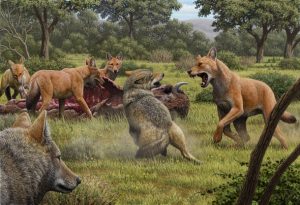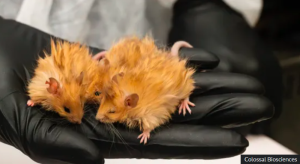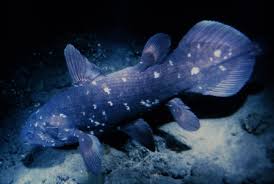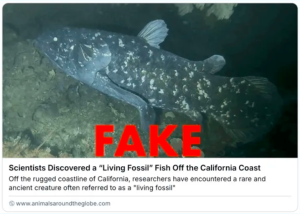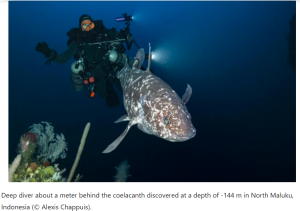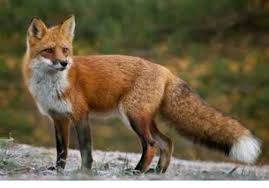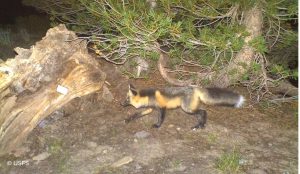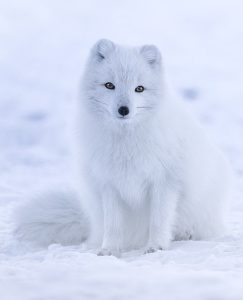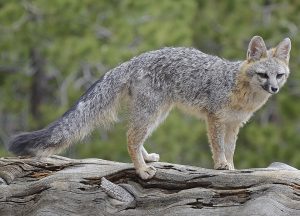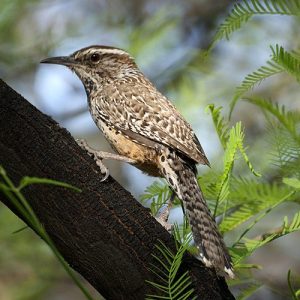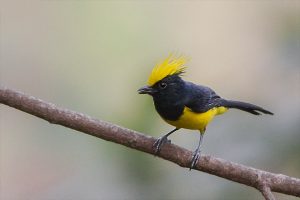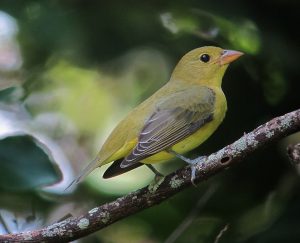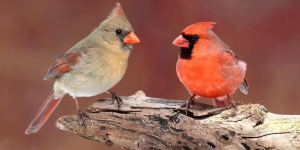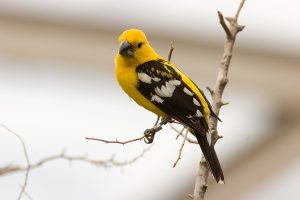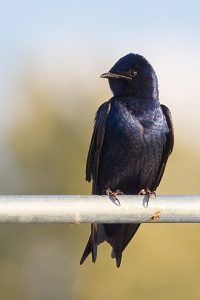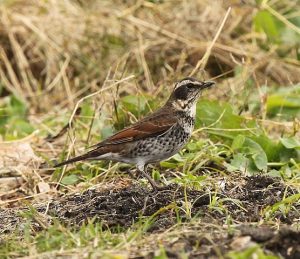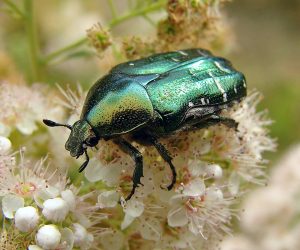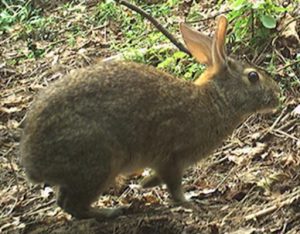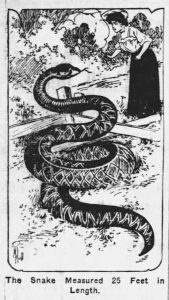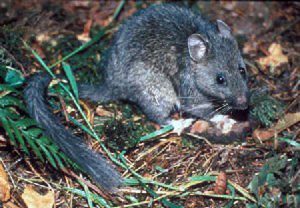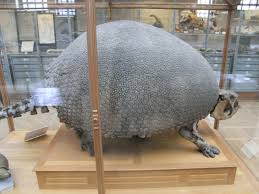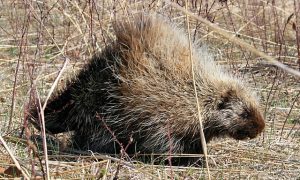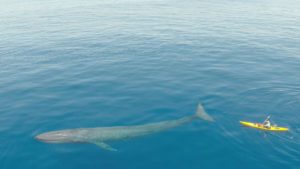Podcast: Play in new window | Download (Duration: 10:08 — 11.1MB)
Thanks to Ryder, Alexandria, and Simon for their suggestions this week! Let’s learn about three remarkable wading birds. Two of them are pink!
Bird sounds taken from the excellent website xeno-canto.
The goliath heron is as tall as people [picture by Steve Garvie from Dunfermline, Fife, Scotland – Goliath Heron (Ardea goliath), CC BY-SA 2.0, https://commons.wikimedia.org/w/index.php?curid=12223810]:
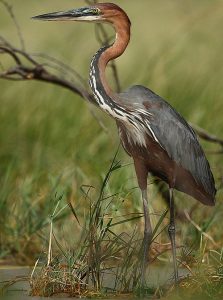
The roseate spoonbill has a bill shaped like a spoon, you may notice [picture by Photo Dante – Own work, CC BY-SA 4.0, https://commons.wikimedia.org/w/index.php?curid=42301356]:
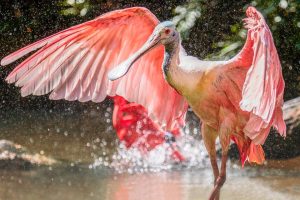
Flamingos really do look like those lawn ornaments [picture by Valdiney Pimenta – Flamingos, CC BY 2.0, https://commons.wikimedia.org/w/index.php?curid=6233369]:
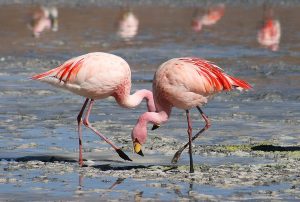
Show transcript:
Welcome to Strange Animals Podcast. I’m your host, Kate Shaw.
This week we’re going to learn about three large birds with long legs that spend a lot of time wading through shallow water, suggested by Ryder, Alexandria, and Simon.
Wading birds tend to share traits even if they’re not closely related, because of convergent evolution. In order to wade in water deep enough to find food, a wading bird needs long legs. Then it also needs a long neck so it can reach its food more easily. A long beak helps to grab small animals too. Having big feet with long toes also helps it keep its footing in soft mud.
Let’s start with Ryder’s suggestion, the goliath heron. It’s the biggest heron alive today, standing up to 5 feet tall, or 1.5 meters. That’s as tall as a person! It only weighs about 11 lbs at most, though, or 5 kg, but its wingspan is over 7 ½ feet across, or 2.3 meters. It’s a big, elegant bird with a mostly gray and brown body, but a chestnut brown head and neck with black and white streaks on its throat and chest.
The goliath heron lives throughout much of sub-Saharan Africa, meaning south of the Sahara Desert, anywhere it can find water. It’s happy on the edge of a lake or river, in a swamp or other wetlands, around the edges of a water hole, or even along the coast of the ocean. It usually stands very still in the water, looking down. When a fish swims close enough, the heron stabs it with its bill, pulls it out of the water, and either holds it for a while until the bird is ready to swallow the fish, or sometimes it will even set the fish down on land or floating vegetation for a while. It’s not usually in a big hurry to swallow its meal. Sometimes that means other birds steal the fish, especially eagles and pelicans, but the goliath heron is so big and its beak is so sharp that most of the time, other birds and animals leave it alone.
The goliath heron will also eat frogs, lizards, and other small animals when it can, but it prefers nice big fish. It can catch much bigger fish than other wading birds, and eating big fish is naturally more energy efficient than eating small ones. If a goliath heron only catches two big fish a day, it’s had enough to eat without having to expend a lot of energy hunting.
This is what a goliath heron sounds like:
[goliath heron call]
Alexandria’s suggestion, the roseate spoonbill, is also a big wading bird, but it’s very different from the goliath heron. For one thing, it’s pink and white and has a long bill that’s flattened and spoon-shaped at the end. It’s only about half the size of a goliath heron, with a wingspan over 4 feet across, or 1.3 meters, and a height of about 2 ½ feet, or 80 cm. That’s still a big bird! It mostly lives in South America east of the Andes mountain range, but it’s also found in coastal areas in Central America up through the most southern parts of North America.
Unlike the goliath heron, which is solitary, the roseate spoonbill is social and spends time in small flocks as it hunts for food. It likes shallow coastal water, swamps, and other wetlands where it can find it preferred food. That isn’t fish, although it will eat little fish like minnows when it catches them. It mainly eats crustaceans like crabs and crayfish, along with frogs, aquatic insects, and mollusks, and some seeds and other plant material. Since most of its food lives on the floor of the waterway or hidden in mud or water plants, the spoonbill usually can’t see its prey. It depends on the sensitive nerves in its bill to know the difference between, say, a crab and a crab-shaped rock. It walks through shallow water, sweeping its bill back and forth through the mud at the bottom, and grabs any little animal it can. Other birds like egrets will sometimes follow foraging spoonbills so they can catch any animals that the spoonbills miss.
Baby spoonbills are born with ordinary pointy bills, but as the chicks mature, the ends of their beaks flatten and become more and more spoon-shaped. If the goliath heron’s bill is like a pair of kitchen knives, the spoonbill’s beak is like a set of salad tongs that can scoop up lots of salad and dressing at once.
The roseate spoonbill gets its pink coloration from the food it eats. A lot of crustaceans contain carotenoid pigments, which the spoonbill absorbs and expresses in its feathers.
There are other spoonbills in the world, but the roseate spoonbill is the only one found in the Americas. The other five species live in Africa and Madagascar, Australia and New Zealand, and much of Europe and Asia. All the other species are white with black, yellow, or pink facial markings. Only the roseate spoonbill is all pink.
This is what the roseate spoonbill sounds like:
[roseate spoonbill call]
Simon’s suggestion is another pink bird that you’ve undoubtedly heard of, the flamingo! It lives in parts of South America, Central and southern North America, Africa, southern Europe and the Middle East, and southwest Asia. The two most well-known and widespread species are the greater and lesser flamingos. The greater flamingo is the biggest, standing over 4 ½ feet tall, or 1.4 meters. That’s still not as tall as the goliath heron, although it’s close. Its wingspan can be five feet across, or 1.5 meters.
The flamingo is kind of a weird bird, even by wading bird standards. It rests by standing on one leg, which it can do without falling over and without expending any energy to keep itself upright. It can even sleep while standing on one leg. People are really good at walking on long legs, but it’s a lot harder for us to stand on one leg without swaying and eventually falling over when our muscles tire. On the other hand, we weigh a lot more than a flamingo, which is barely over 7 ½ lbs in weight, or 3.5 kg.
The most unusual aspect of the flamingo is its beak. It’s thick and famously bent downward halfway along its length, so that it’s shaped sort of like a boomerang. There’s really no way to describe it as a type of kitchen implement unless it’s a strainer basket, because that’s how the flamingo uses its beak.
The flamingo eats tiny animals like brine shrimp and other small crustaceans, insect larvae, and even algae, and it catches all these tiny foods by sifting them from the water with its beak. The beak is lined with lamellae, which look like little hairs or the teeth of a comb, and its tongue is rough. It lowers its head on its long neck until its head is actually upside down, scoops its beak back and forth through the water, and uses its tongue to push the water out through the lamellae. Whatever algae or tiny animals are left in its mouth, it swallows.
Flamingos are extremely social and live in huge flocks, sometimes consisting of thousands of birds. The female only lays a single egg in her mud nest, and both parents take care of the baby by feeding it crop milk. This isn’t actually milk but is a nutritious substance produced by glands in the throat and crop. Emperor penguins, pigeons, and doves are the only other birds known that produce crop milk for their babies. Flamingo chicks have ordinary straight beaks that develop the bend as they grow older.
Like the roseate spoonbill, the flamingo’s pink coloration is due to its diet. The algae it eats contains a lot of carotenoids, as do the brine shrimp it eats. The American flamingo tends to be the pinkest overall, but all flamingos are pink if they’re eating enough foods that contain these carotenoids.
This is what an American flamingo flock sounds like:
[flamingo call]
There are lots more wading birds than the ones we’ve covered here, and not all of them have long legs and long necks. Just, you know, the best ones do.
You can find Strange Animals Podcast at strangeanimalspodcast.blubrry.net. That’s blueberry without any E’s. If you have questions, comments, or suggestions for future episodes, email us at strangeanimalspodcast@gmail.com. We also have a Patreon at patreon.com/strangeanimalspodcast if you’d like to support us for as little as one dollar a month and get monthly bonus episodes.
Thanks for listening!

